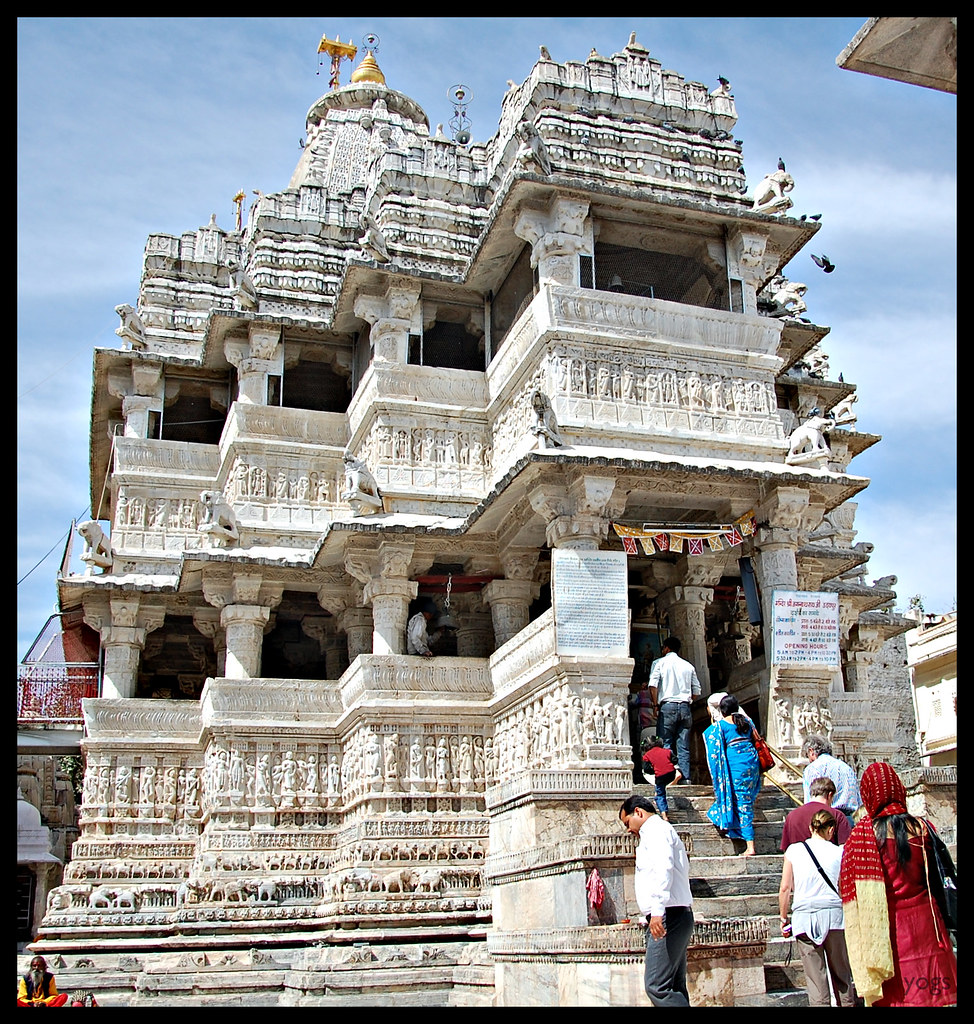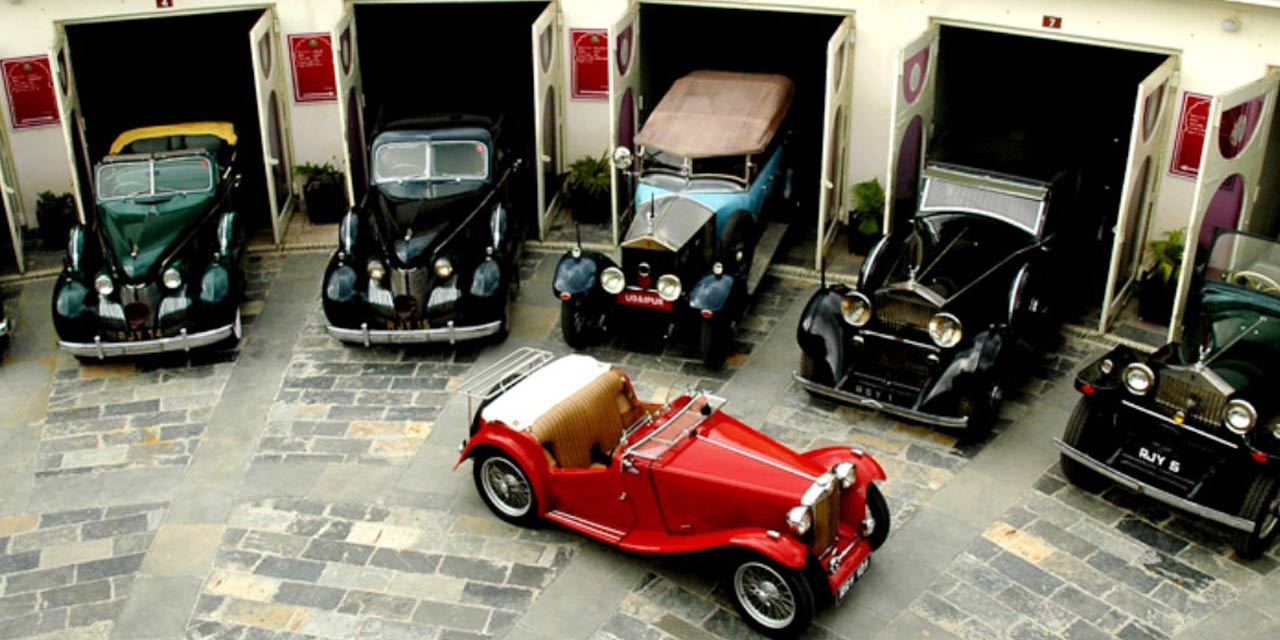Places to visit in Udaipur
Making its name among the most beautiful places in the world, Udaipur is an ethereal beauty. Known as the “City of Lakes” it is a frequently-visited tourist destination in the North Indian State of Rajasthan. Surrounded by the ancient Aravalli Mountains and beautiful lakes, also the reason of its nickname, the historic town was one of the last royal provinces of Rajasthan. Also called ‘The City of Dawn’, Udaipur seems to be among the most beautiful places on Earth, hence making its name among the top romantic places in the world. Udaipur tours present enchanting marble palaces, beautifully laid-out gardens, brilliant kaleidoscope of narrow lanes, glittering lakes which make Udaipur seem almost like a mirage.
The capital of the erstwhile kingdom of Mewar, Udaipur is among the must-visit places in India and not just Rajasthan. The royal kingdom reverberates with many legends of bravery with the most respectable of all Rajput princely states in Rajasthan. Till date the tales are narrated of the Rulers of Mewar who displayed their bravery & courage while protecting their motherland from invaders. In addition of Udaipur's beauty, its even remarkable past spellbinds visitors.
The places to visit Udaipur include the royal palaces, temples, gardens, the bylanes, etc. The City Palace, the fascinating white-marble beauty is a must visit beauty. It houses 11 magnificent palaces from various periods. The museum has many antiques, paintings and memorabilia. The Jagdish Temple, Bagore ki Haveli, Saheliyon ki Bari, Royal Vintage Car Museum, etc. are unmissable tourist attractions in Udaipur. The Lake City Palace right in the middle of the Pichola Lake is a beauty unlike another which has immortalized by movies, paintings, books, etc. On a scenic boat ride on Lake Pichola, come across the picture-perfect palace. Besides the popular sight, a tour of the bylanes of Udaipur must certainly be included in your itinerary. In these nooks and corners find shops that deal with handicrafts, locally-crafted. Make the evenings with fun performances of local dances as well as puppetry. The vibrant puppets brought to life is an amazing experience. Horse-rides and buggy rides to the local villages is equally splendid addition to your vacation.
Boat rides at sunset add to the amazing experience of a holiday in Udaipur. The taste of the delights of Rajasthan, the gastronomy besides the attractions in Udaipur, beyond the city there is much to see and do. Ranakpur, Haldighati, Kumbalgarh, etc. are some places you must not miss out on.

City Palace Udaipur
City Palace: The biggest palace complex in Rajasthan is the grand City Palace towering above the lake. The major parts of the palace are now well-maintained as a museum with an enormous collection of glass, ceramic figures and small canvases.

Jagdish Temple
The famous Jagdish Temple is situated 150 mts from the City Palace. This fine Indo-Aryan Temple was constructed by Maharana Jagat Singh in 1651. This temple treasures a black stone image of Lord Vishnu as Jagannath, Lord of the universe. A brass image of Garuda the Hindu divinity is in a monument in front of the temple.

Saheliyon Ki Bari
The Saheliyon ki Bari or the garden of the Maids of Honor is situated in the north of the city. It is a small exquisite garden with fountains, stone elephants and a beautiful lotus pond.

Jag Mandir Palace
Jag Mandir is a palace built on an island in the Lake Pichola. It is also called the "Lake Garden Palace". The palace is located in Udaipur city in the Indian state of Rajasthan. Its construction is credited to three Maharanas of the Sisodia Rajputs of Mewar kingdom. The construction of the palace was started in 1551 by Maharana Amar Singh, continued by Maharana Karan Singh and finally completed by Maharana Jagat Singh I. It is named as "Jagat Mandir" in honour of the last named Maharana Jagat Singh. The royal family used the palace as a summer resort and pleasure palace for holding parties. The palace served as a refuge to asylum seekers on two separate occasions

Sajjangarh Monsoon Palace
The Monsoon Palace, also known as the Sajjan Garh Palace, is a hilltop palatial residence in the city of Udaipur, Rajasthan in India, overlooking the Fateh Sagar Lake. It is named Sajjangarh after Maharana Sajjan Singh of the Mewar Dynasty, who it was built for in 1884. The palace offers a panoramic view of the city's lakes, palaces and surrounding countryside. It was built chiefly to watch the monsoon clouds; hence, appropriately, it is popularly known as Monsoon Palace. It is said that the Maharana built it at the top of the hill to get a view of his ancestral home, Chittorgarh. Previously owned by the Mewar royal family, it is now under the control of the Forest Department of the Government of Rajasthan and has recently been opened to the public. The palace provides a beautiful view of the sunset. Its builder, Maharana Sajjan Singh, originally planned to make it a five-storey astronomical centre. The plan was cancelled with Maharana Sajjan Singh's premature death. It was then turned into a monsoon palace and hunting lodge. High in the Aravalli Hills, just outside Udaipur, the Palace is illuminated in the evenings, giving a golden orange glow

Vintage and Classic Car Museum
Vintage and Classic Car Museum is a car museum in Udaipur in Rajasthan state in India, having some of the rarest classic and vintage car collection. This museum is owned by Arvind Singh Mewar

Eklingji Temple
Eklingji Temple is one of the most famous temples of Rajasthan. Located in the town of Eklingji (Kailashpuri), the place got its popular name from the temple. Eklingji Temple is positioned at a distance of 22 km in the north of Udaipur, on the national highway no. 8. Eklingnath Temple is dedicated to the Lord Shiva of the Hindu religion. Initially, the temple was built in 734 A.D. by Bappa Rawal. Since that time, Eklingji has been the ruling deity of Mewar rulers. In the later years, it was repaired and modified by various Kings, to clean the remnants of obliteration made by the attacks of Mohammedans.

